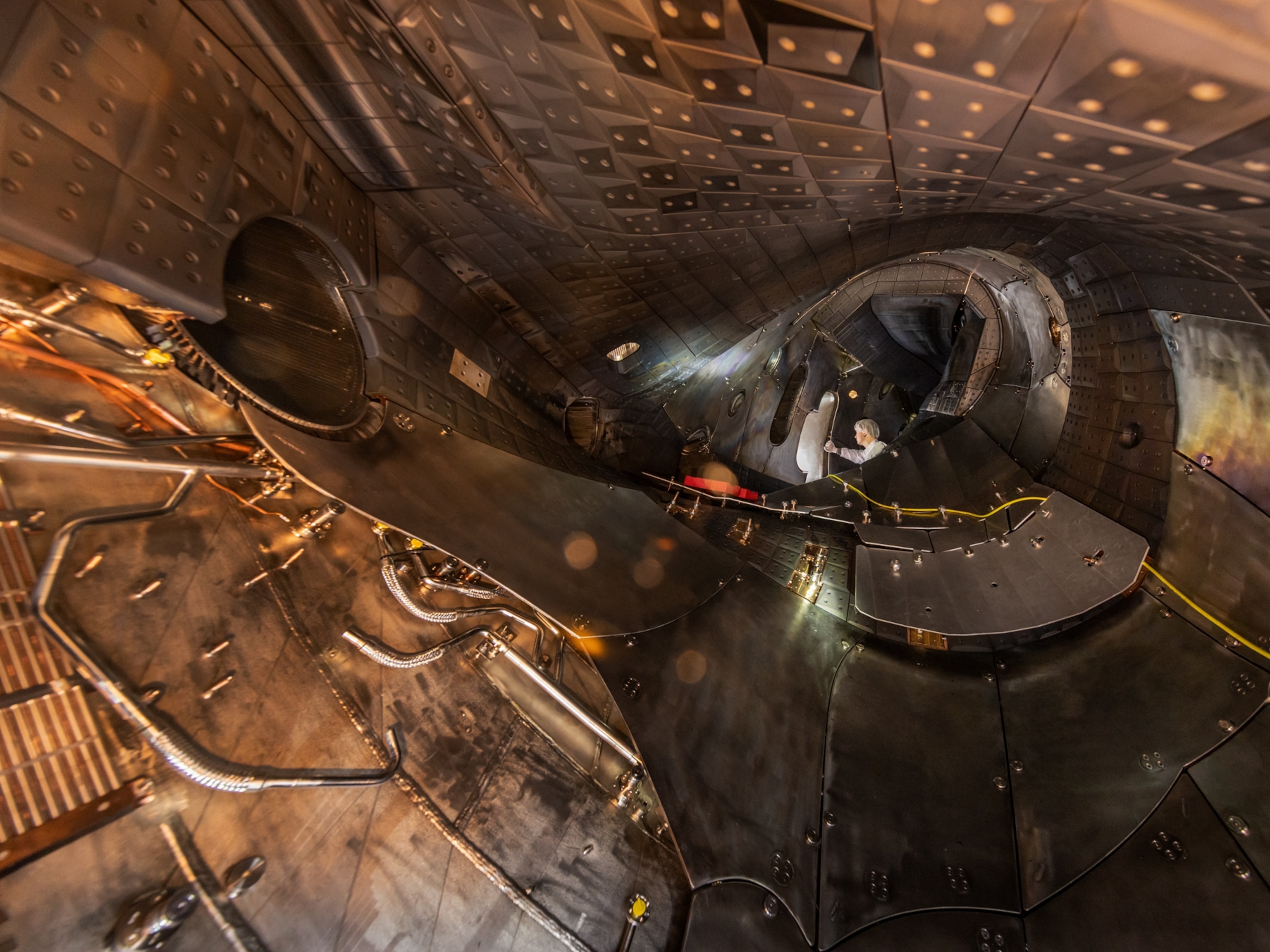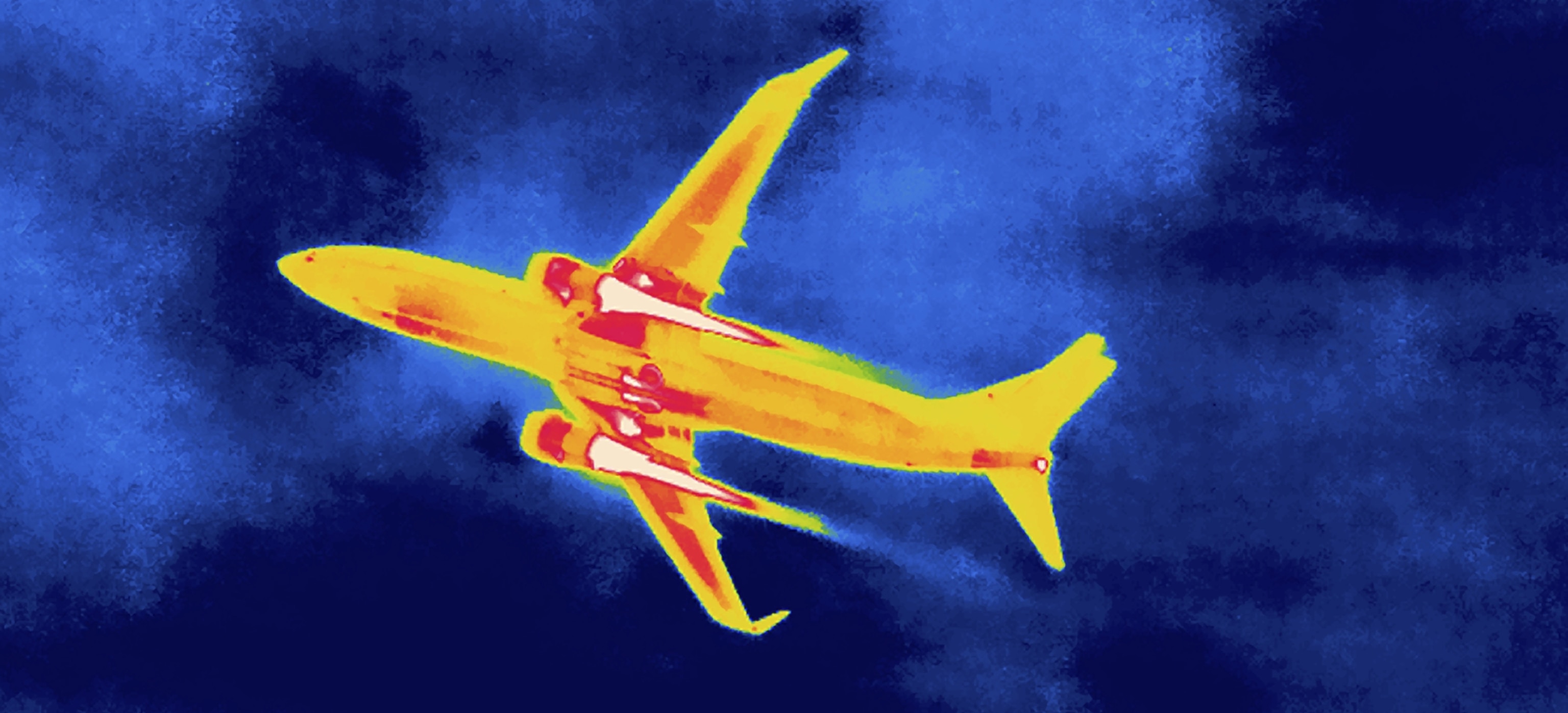
Tyrone Turner Takes Thermal Imaging Up, Up and Away
“It was like a red string of power—the sleek body and the color rendition of the hot air coming out of the engines reminded me of cartoon versions of fast cars, and I was fascinated by that.”—Tyrone Turner
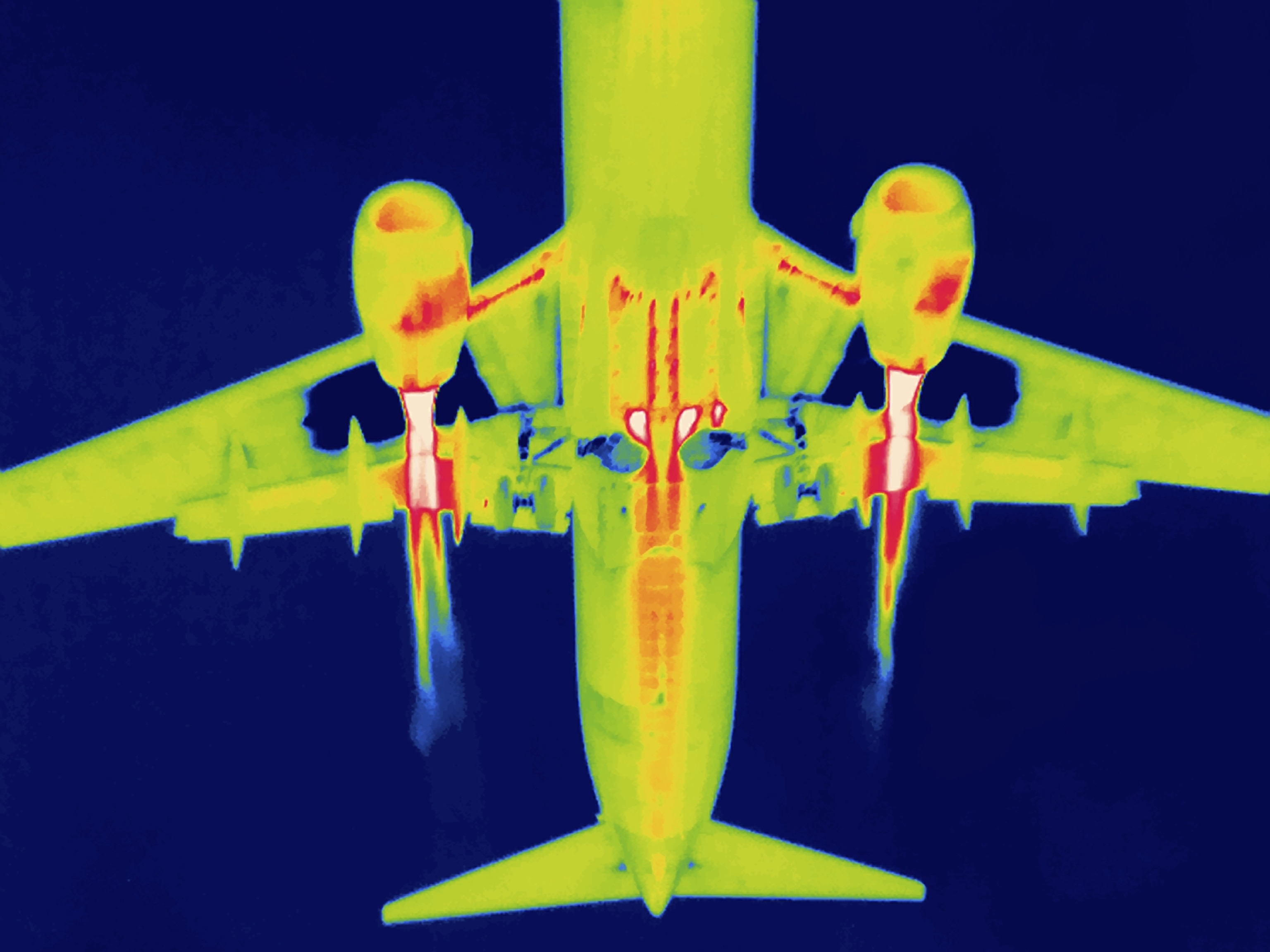
For those not familiar with DC’s Reagan National Airport, there’s a small strip of land near the runway called Gravelly Point Park, where you can lay on your back and watch the planes land perilously close to your head. (Or, takeoff, depending on wind direction.) The planes come in loud—and fast—and the first time you experience it, you feel a slight adrenaline rush as the planes whoosh overhead.
This made it the perfect spot for photographer Tyrone Turner.
Courtesy of a National Geographic magazine assignment, Turner got his hands on a high-end thermal imaging camera this past December and headed to Gravelly Point to capture images of airplanes. Two days later he had hundreds of images that show the varying degrees of heat in the fuselage and engines as the planes takeoff and land.
“I was shooting from different vantage points, trying to get the heat, trying to get the engine and parts of the plane body,” he said. “Then I was trying to get the trees, and I really liked how that looked. I had a fascination with this camera that registers information in a way that we don’t normally see it.”
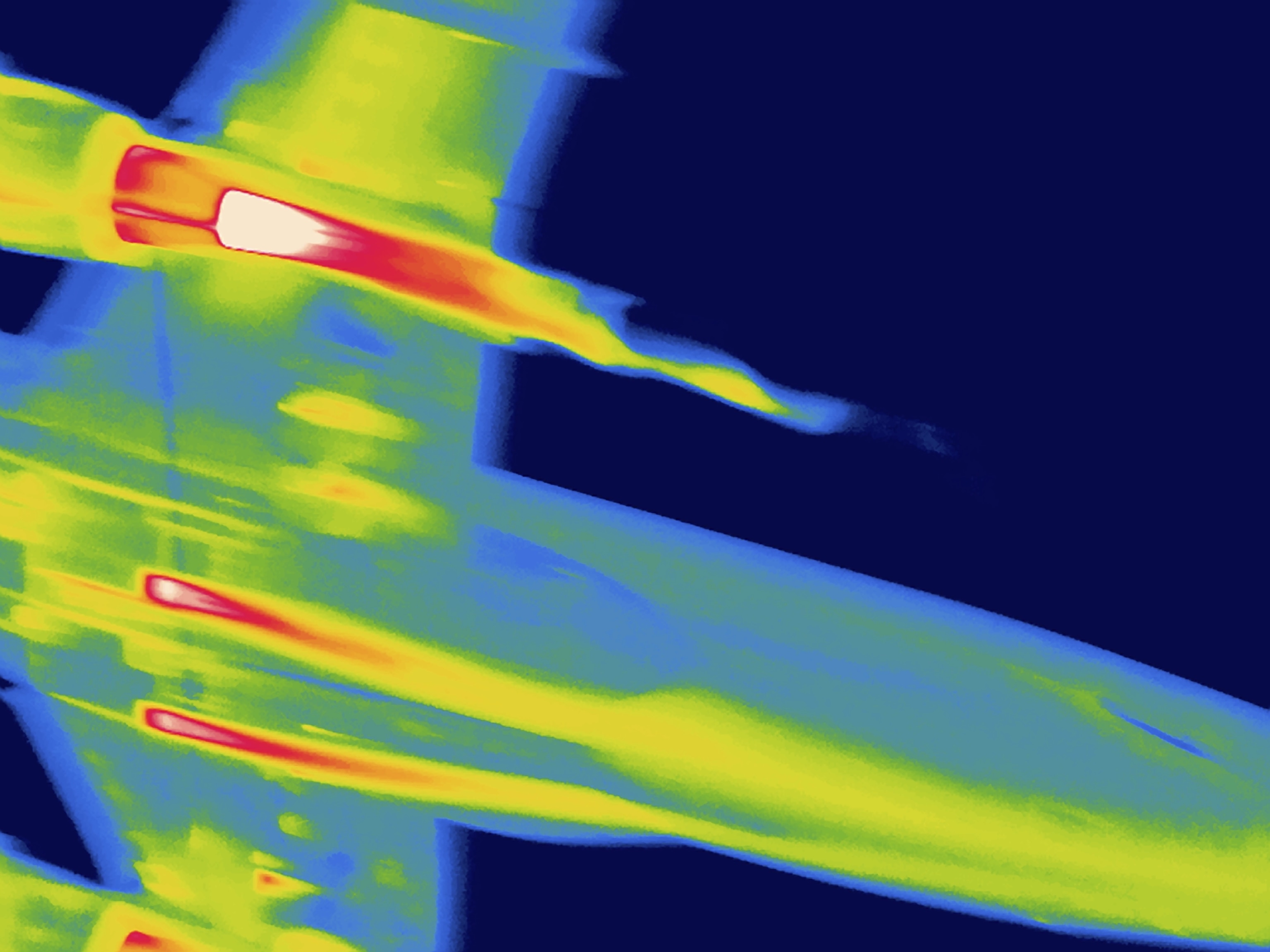
The camera he was using—the FLIR T640—uses infrared imaging to “see” thermal energy emitted from an object. The higher the object’s temperature, the greater the infrared radiation emitted. Warm objects stand out against cooler backgrounds, allowing the viewer to see the variations in temperature. Thermography is mostly used in commercial and industrial applications, such as by firefighters, electricians, and the military.
One of Turner’s challenges when shooting the planes was that the thermal imaging camera has a slow shutter speed and a significant lag time between pressing the button and actually making the image. He had to experiment with panning and leading the camera prior to the plane coming into view. This meant he was only able to take one shot per landing, so he spent hours in the park as the planes landed every two-to-three minutes.
“After some of the first ones I was like ‘wow’ and started to get hooked,” said Turner. “I got excited—you could see the flames, which is really just hot air, and I thought ‘this is cool’ and just kept going. It was one of those times that I was unexpectedly surprised by the results.”
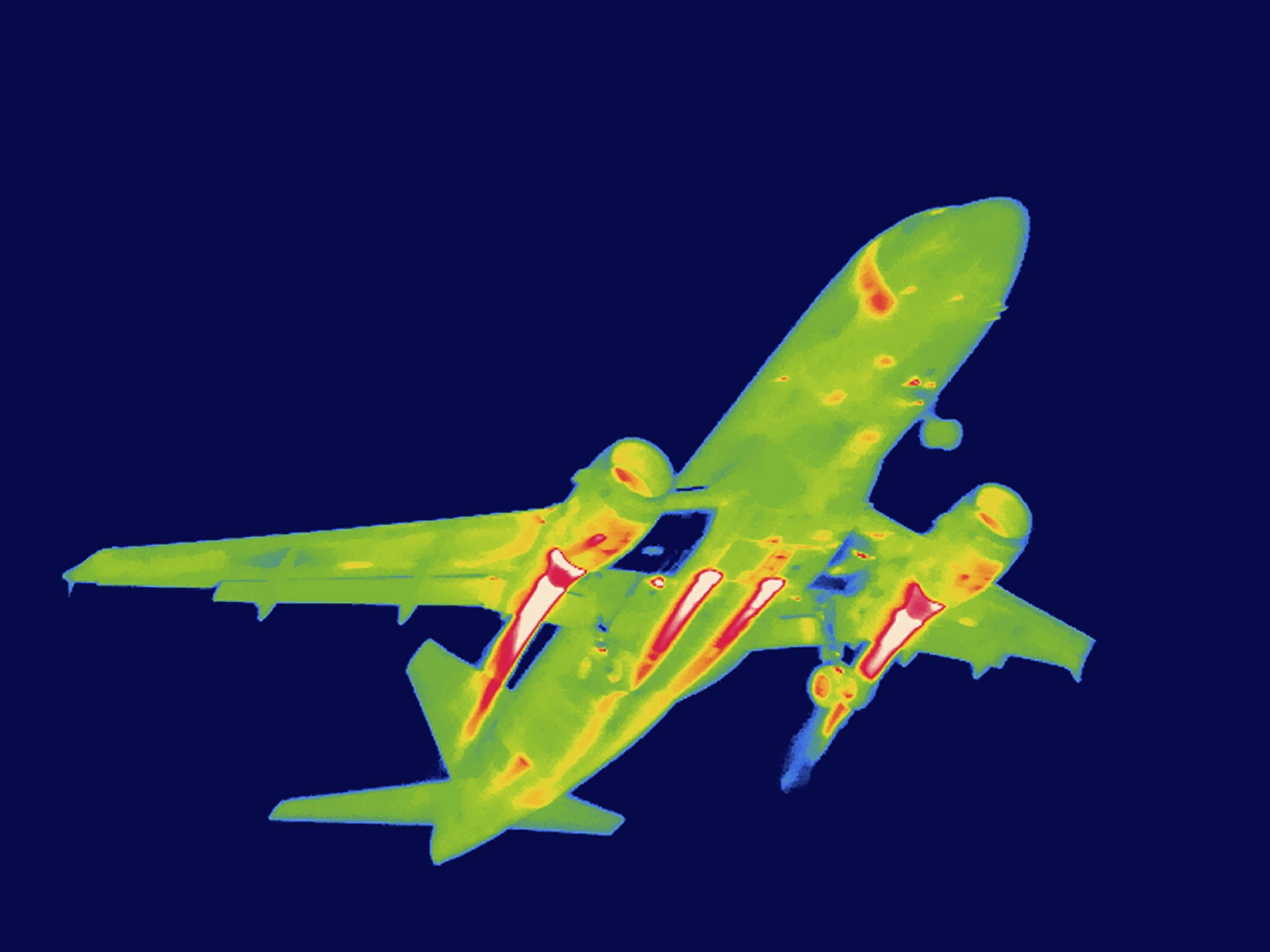
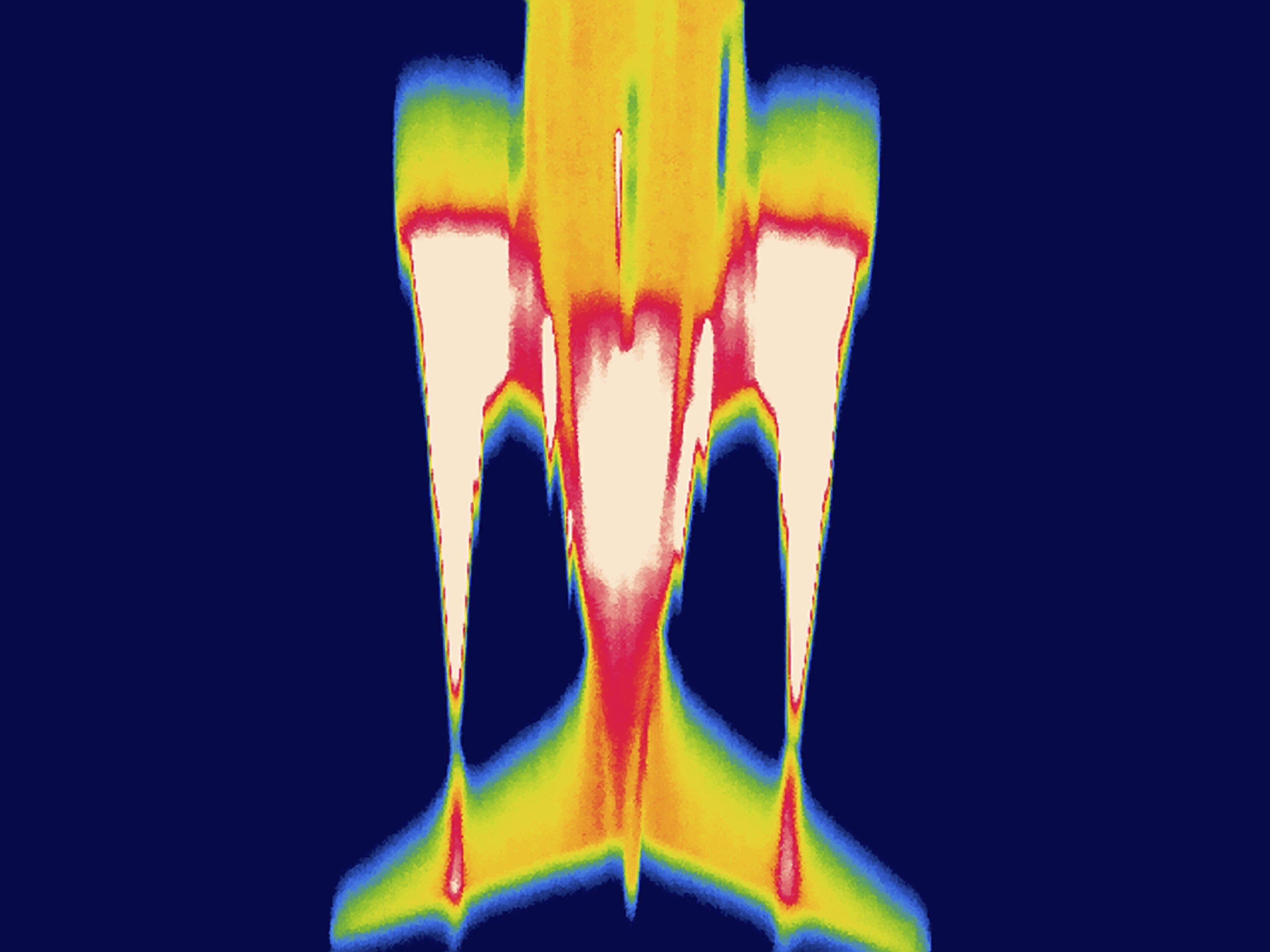
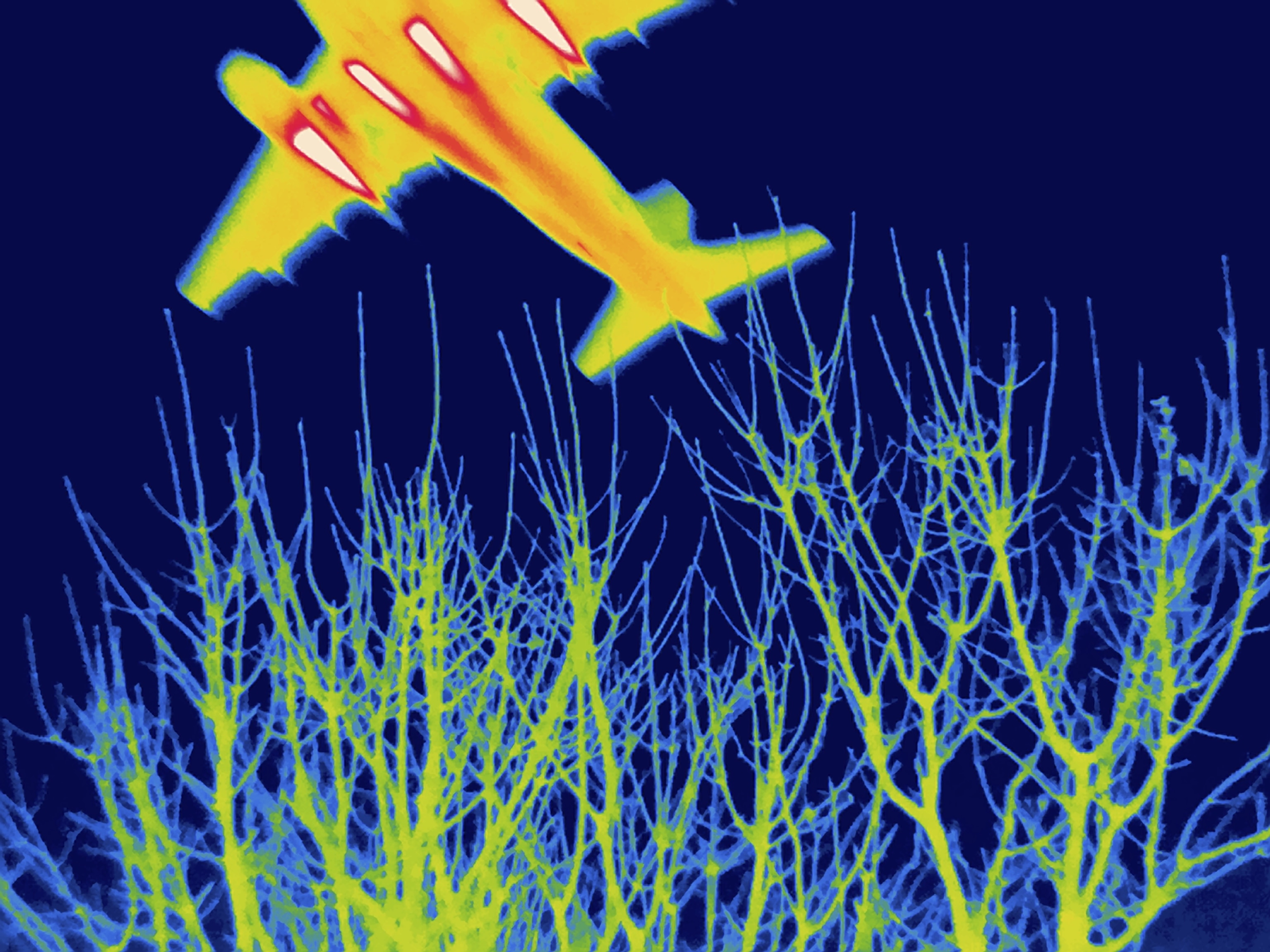
Turner first shot thermal images for National Geographic for a 2009 article on energy conservation. His new thermal images of body heat will be published in the May issue of the magazine.
View more of his work on his website and follow him on Tumblr and Instagram.


